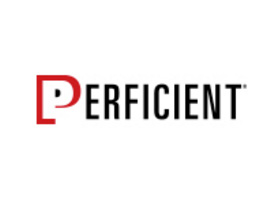With adoption rates of Power Platform skyrocketing, so do the critical questions of groups (Security, Compliance, IT, Legal) within the organization : “How do we limit our exposure to data leaks?” “How do we manage use?” “How do we get insights into what people are building and subsequently utilizing?” “Have we approved the connections to […]
Posts Tagged ‘CoE’
How Should You Structure Your Power Platform COE?
The following is the fourth in a series of blogs about how a center of excellence can help you unlock the potential of your people and Power Platform. So far in this series, we have discussed how Power Platform enables your makers to improve business processes by developing low-code applications and how a COE enables […]
An Architectural Approach to Cognos TM1 Design
Overtime, I’ve written about keeping your TM1 model design “architecturally pure”. What this means is that you should strive to keep a models “areas of functionality” distinct within your design. Common Components I believe that all TM1 applications, for example, are made of only 4 distinct “areas of functionality”. They are absorption (of key information […]
A Practice Vision
Vision Most organizations today have had successes implementing technology and they are happy to tell you about it. From a tactical perspective, they understand how to install, configure and use whatever software you are interested in. They are “practitioners”. But, how may can bring a “strategic vision” to a project or to your organization in […]
IBM OpenPages GRC Platform –modular methodology
The OpenPages GRC platform includes 5 main “operational modules”. These modules are each designed to address specific organizational needs around Governance, Risk, and Compliance. Operational Risk Management module “ORM” The Operational Risk Management module is a document and process management tool which includes a monitoring and decision support system enabling an organization to analyze, manage, […]
The installation Process – IBM OpenPages GRC Platform
When preparing to deploy the OpenPages platform, you’ll need to follow these steps: Determine which server environment you will deploy to – Windows or AIX. Determine your topology – how many servers will you include as part of the environment? Multiple application servers? 1 or more reporting servers? Perform the installation of the OpenPages prerequisite […]
IBM OpenPages Start-up
In the beginning… OpenPages was a company “born” in Massachusetts, providing Governance, Risk, and Compliancesoftware and services to customers. Founded in 1996, OpenPages had more than 200 customers worldwide including Barclays, Duke Energy, and TIAA-CREF. On October 21, 2010, OpenPages was officially acquired by IBM: http://www-03.ibm.com/press/us/en/pressrelease/32808.wss What is it? OpenPages provides a technology driven way […]
Configuring Cognos TM1 Web with Cognos Security
Recently I completed upgrading a client’s IBM Cognos environment – both TM1 and BI. It was a “jump” from Cognos 8 to version 10.2, and TM1 9.5 to version 10.2.2. In this environment, we had multiple virtual servers (Cognos lives on one, TM1 on one and the third is the gateway/webserver). Once the software was […]
Perficient takes Cognos TM1 to the Cloud
IBM Cognos TM1 is well-known as the planning, analysis, and forecasting software that delivers flexible solutions to address requirements across an enterprise, as well as provide real-time analytics, reporting, and what-if scenario modeling and Perficient is well-known for delivering expertly designed TM1 based solutions. Analytic Projects Perhaps phase zero of a typical analytics project would […]
Exercising IBM Cognos Framework Manager
In Framework Manager, an expression is any combination of operators, constants, functions, and other components that evaluates to a single value. You can build expressions to create calculation and filter definitions. A calculation is an expression that you use to create a new value from existing values contained within a data item. A filter is […]
Framework Manager – Creating a Parameter Map
A session parameter is a variable that IBM Cognos Framework Manager associates with a particular session. Examples include (current user name, current active language, current date and time, and others). Parameter maps are a method for substituting different values with different keys. A parameter map can be thought of as simple data “look-up table”. Each […]
Creating Business Logic – in Cognos Framework Manager
One of the goals of the Cognos Framework Manager modeler is to build a model that makes report authoring easier. To accomplish that, you “build in” business logic” (a loosely defined term here) into your meta model. This business logic can be simple (like simply renaming or hiding a database table column) or quite complex […]


